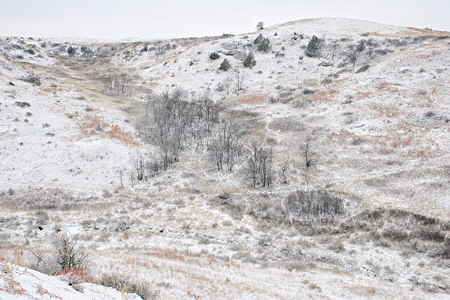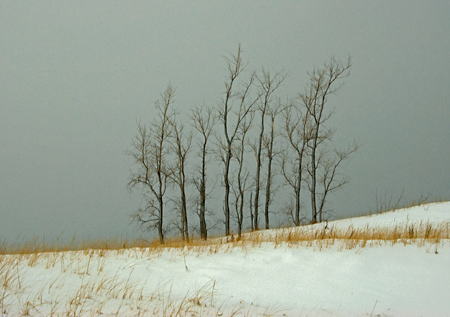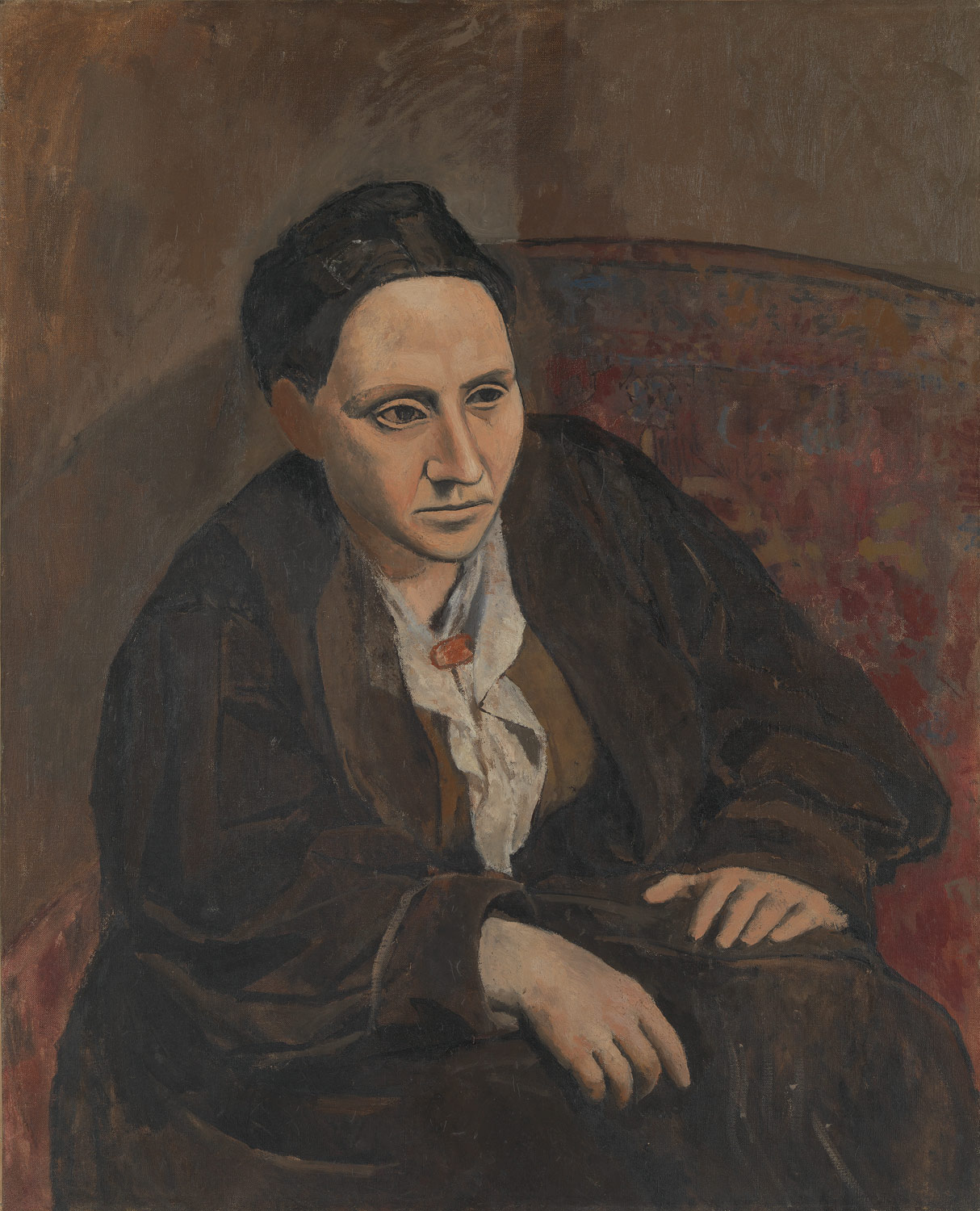Posted by Steve Durbin on February 29th, 2008

A while ago I posted some first thoughts on personal psychogeography, including the germ of a project involving photography and writing. I’m grateful to comments (from Martha and Lucy) for pointing me to significant related work by Richard Long, Hamish Fulton (beware annoying Flash), and Francesco Careri. These have been helpful to me in formulating my own project, which is, in fact, very different. I am approaching the idea — call it a psychogeographic study — primarily as a photographer, i.e. one interested in making photographs. In contrast, Long and Fulton (and the architect Careri, from the little I know) consider their photographs quite secondary: the walk itself is the artwork.
more… »
Posted by Birgit Zipser on February 27th, 2008
as we are told in yesterday’s headline of the Columbia Daily Spectator reporting on the opening of an HBO documentary reminding us of the long gestation of Christo and Jeanne-Claude’s Saffron Gates in Central Park, New York City?
Or does Saffron spell enthusiasm? Here is my snapshot of Saffron cloth billowing in the wind on a snow-free day, February 2005.

more… »
Posted by Jay on February 24th, 2008
Posted by Birgit Zipser on February 22nd, 2008
After musing for decade or so on how to capture this solitary stand of cottonwoods growing on a ridge in the dunes, the challenge was met through dérive or drifting.

more… »
Posted by Bob Martin on February 20th, 2008
 There is always an on going conversation with representational artist about the use of tools, like mirrors, photos, projectors, grids etc. and the question of whether or not the use of these tools constitutes cheating. As if there is some unfair advantage in using these tools and conversely sainthood when you don’t use them. But the use of any tool as well as not using one does not make a drawing or painting better, especially representation works. When we have completed a painting of someone, what we have is not that person, regardless of the tools we used. What we have is our interpretation of that person on canvas or paper and it is the interpretation that is the most important part. I’ve heard this story about Gertrude Stein and Picasso many times and can guess that it is true. Supposedly on seeing this portrait of herself she said to Picasso “It doesn’t look anything like me” and he responded “that in time it will”. I and many other people that I know have seen photos of Ms. Stein and they don’t look anything like her. It’s the Picasso interpretation that I remember best.
There is always an on going conversation with representational artist about the use of tools, like mirrors, photos, projectors, grids etc. and the question of whether or not the use of these tools constitutes cheating. As if there is some unfair advantage in using these tools and conversely sainthood when you don’t use them. But the use of any tool as well as not using one does not make a drawing or painting better, especially representation works. When we have completed a painting of someone, what we have is not that person, regardless of the tools we used. What we have is our interpretation of that person on canvas or paper and it is the interpretation that is the most important part. I’ve heard this story about Gertrude Stein and Picasso many times and can guess that it is true. Supposedly on seeing this portrait of herself she said to Picasso “It doesn’t look anything like me” and he responded “that in time it will”. I and many other people that I know have seen photos of Ms. Stein and they don’t look anything like her. It’s the Picasso interpretation that I remember best. I believe everything we create is about us, what we feel, what’s important to us and what we want to say about it. Being skillful is helpful, but it doesn’t guarantee that you’ve got something to say. (As a kid, I was very skillful playing the piano scales, that is as far as it got). Creativity can be seen as a interpretation of what we believe is physically real. This small painting is a wp interpretation.
I believe everything we create is about us, what we feel, what’s important to us and what we want to say about it. Being skillful is helpful, but it doesn’t guarantee that you’ve got something to say. (As a kid, I was very skillful playing the piano scales, that is as far as it got). Creativity can be seen as a interpretation of what we believe is physically real. This small painting is a wp interpretation. 
Posted by Steve Durbin on February 19th, 2008
Among the first images I captured after purchasing my digital camera were made on a trip to the Yucatan peninsula of Mexico. I was drawn mainly by the Mayan ruins there, having had a particular interest in things Maya since a college anthropology class. Though terrific in some ways, photographically the trip was not a success. Although I wrote last week of re-visiting and revising old images, there’s no point if the original lacks merit. I did not know my new equipment well, I didn’t understand picture-making very well, and though I knew I wanted to work in black and white, I hadn’t yet developed an eye for it.

more… »
Posted by David on February 16th, 2008

The first phase of the dramatic expansion at LACMA (Los Angeles County Museum of Art) has just opened, featuring a new building for contemporary art, BCAM (Broad Contemporary Art Museum), and large-scale sculptural installations by a number of artists including Charles Ray, Richard Serra, and others. Here are some photos I shot this evening of Urban Light, a sculpture by Chris Burden that incorporates more than two hundred restored cast-iron lampposts from Los Angeles County.
more… »




 There is always an on going conversation with representational artist about the use of tools, like mirrors, photos, projectors, grids etc. and the question of whether or not the use of these tools constitutes cheating. As if there is some unfair advantage in using these tools and conversely sainthood when you don’t use them. But the use of any tool as well as not using one does not make a drawing or painting better, especially representation works. When we have completed a painting of someone, what we have is not that person, regardless of the tools we used. What we have is our interpretation of that person on canvas or paper and it is the interpretation that is the most important part. I’ve heard this story about Gertrude Stein and Picasso many times and can guess that it is true. Supposedly on seeing this portrait of herself she said to Picasso “It doesn’t look anything like me” and he responded “that in time it will”. I and many other people that I know have seen photos of Ms. Stein and they don’t look anything like her. It’s the Picasso interpretation that I remember best.
There is always an on going conversation with representational artist about the use of tools, like mirrors, photos, projectors, grids etc. and the question of whether or not the use of these tools constitutes cheating. As if there is some unfair advantage in using these tools and conversely sainthood when you don’t use them. But the use of any tool as well as not using one does not make a drawing or painting better, especially representation works. When we have completed a painting of someone, what we have is not that person, regardless of the tools we used. What we have is our interpretation of that person on canvas or paper and it is the interpretation that is the most important part. I’ve heard this story about Gertrude Stein and Picasso many times and can guess that it is true. Supposedly on seeing this portrait of herself she said to Picasso “It doesn’t look anything like me” and he responded “that in time it will”. I and many other people that I know have seen photos of Ms. Stein and they don’t look anything like her. It’s the Picasso interpretation that I remember best. I believe everything we create is about us, what we feel, what’s important to us and what we want to say about it. Being skillful is helpful, but it doesn’t guarantee that you’ve got something to say. (As a kid, I was very skillful playing the piano scales, that is as far as it got). Creativity can be seen as a interpretation of what we believe is physically real. This small painting is a wp interpretation.
I believe everything we create is about us, what we feel, what’s important to us and what we want to say about it. Being skillful is helpful, but it doesn’t guarantee that you’ve got something to say. (As a kid, I was very skillful playing the piano scales, that is as far as it got). Creativity can be seen as a interpretation of what we believe is physically real. This small painting is a wp interpretation. 

